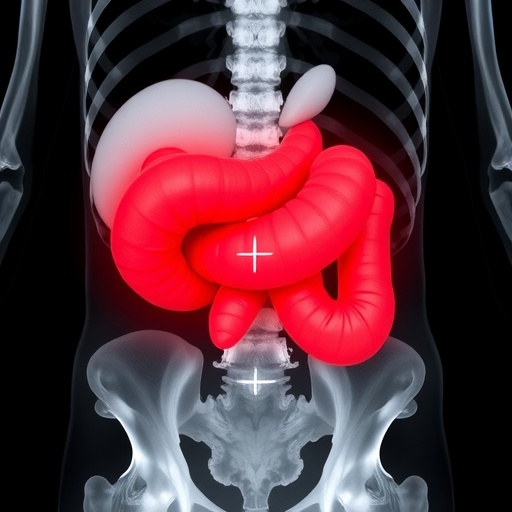A remarkable case has surfaced in the world of oncological research, shedding light on the complexities of rare tumors. Researchers have documented an unprecedented occurrence of primary hemangioblastoma in the rectum, a condition typically recognized in the central nervous system rather than the gastrointestinal tract. This finding opens new avenues for understanding tumor biology and diagnosing rare neoplasms. The case demonstrates not only the unpredictability of tumor locations but also challenges existing paradigms regarding hemangioblastomas.
Hemangioblastomas, generally classified as vascular tumors, are predominantly found in the cerebellum, brain stem, and spinal cord. The presence of such a tumor in the rectum is extraordinarily rare, which prompted extensive investigation and analysis. Researchers Zheng, Zhang, and Ma joined forces to document this peculiar case, highlighting the need for heightened awareness among healthcare professionals. Their meticulous examination aims to educate on the importance of differential diagnosis in cases presenting with rectal masses, especially in unexpected locations.
The patients’ journey began with symptoms that were mistakenly attributed to more common gastrointestinal disorders. Initially, complaints ranged from rectal bleeding to vague pelvic discomfort. These symptoms are frequently associated with benign conditions, which creates a significant diagnostic challenge for physicians. The authors emphasize that a thorough assessment, including imaging studies and biopsies, is crucial for accurate diagnosis, especially in atypical manifestations of tumors like hemangioblastoma.
Upon further investigation, imaging studies unveiled a mass located in the rectal area. The biopsy revealed the unique histological characteristics of hemangioblastoma, confirmed through immunohistochemical analysis. The tumor exhibited a distinctive vascular proliferation pattern, often confused with other neoplastic growths. The meticulous detail in histopathological analysis is underscored in this report, showcasing the rigorous standards applied in diagnosing rare tumors.
One of the most compelling aspects of this case is the etiology of the hemangioblastoma. Typically associated with von Hippel-Lindau syndrome, a genetic disorder that predisposes individuals to tumor development in various locations, the presence of a solitary hemangioblastoma in the rectum raises intriguing questions. The researchers conducted genetic analyses to explore potential links to hereditary syndromes, ultimately finding no evidence of the condition in the patient.
The treatment approach for this unique case included surgical excision of the neoplasm. This decision reflects the current understanding of hemangioblastoma management, which primarily revolves around complete surgical resection when feasible. The authors provide a comprehensive review of treatment paradigms for similar cases, highlighting the importance of patient-centered care tailored to individual circumstances.
In their review of the literature, the research team identified only a handful of documented cases of hemangioblastoma outside its conventional locations. By collating these instances, they contributed to the broader discourse surrounding the diagnosis and management of rare tumors. Such literature reviews are vital for advancing medical knowledge, particularly when it comes to understanding the myriad presentations of cancer.
The psychological aspect of a rare cancer diagnosis should not be overlooked. Patients often encounter confusion and fear when confronting unfamiliar terms and conditions. Zheng and colleagues emphasize the necessity of supportive counseling and psychological care as part of comprehensive cancer treatment. Patients diagnosed with such rare tumors require a robust support system to address their mental and emotional health alongside their physical treatment.
Looking towards the future, this case serves as a clarion call for ongoing research into rare cancers. The insights gained from this singular patient’s experience will undoubtedly contribute to a growing body of knowledge, potentially guiding future diagnostic protocols and treatment regimens. Investigations into the molecular mechanisms underlying hemangioblastomas could open avenues for targeted therapies, benefiting patients with these uncommon tumors.
As medical practitioners continue to encounter varied presentations of hemangioblastomas, continuous education and awareness are imperative. This case has propelled discussions on the pathological diversity of tumors, reinforcing the idea that rare does not mean insignificant. The medical community must remain vigilant and informed about such anomalies to ensure accurate diagnosis and timely intervention.
The collaboration between researchers and clinicians will be crucial moving forward. By sharing experiences and findings, they can collectively advance understanding in the field of oncology. As this case highlights, individual experiences may contribute greatly to the collective knowledge base, leading to improved outcomes for future patients.
In summary, the report of primary hemangioblastoma in the rectum marks a significant milestone in oncological literature. It captivates interest by blending clinical detail with the broader implications for patient care and medical education. As we forge ahead into an era of precision medicine, findings like these reaffirm the necessity of adaptability and ongoing inquiry in tackling the complexities of cancer.
The implications of this case extend beyond mere documentation; they challenge the existing narratives within oncology and shape future practice. It underscores the importance of interdisciplinary collaboration and continual learning in the quest to better understand and conquer cancer.
In essence, the case of primary hemangioblastoma in the rectum not only adds a unique entry to the annals of medical literature but also serves as a reminder of the importance of vigilance, creativity, and thoroughness in the ever-evolving landscape of cancer research and treatment.
Subject of Research: Primary hemangioblastoma of rectum
Article Title: Primary hemangioblastoma of rectum: a rare case report and review of literature
Article References:
Zheng, A., Zhang, S., Ma, Q. et al. Primary hemangioblastoma of rectum: a rare case report and review of literature.
J Cancer Res Clin Oncol 151, 322 (2025). https://doi.org/10.1007/s00432-025-06366-9
Image Credits: AI Generated
DOI: https://doi.org/10.1007/s00432-025-06366-9
Keywords: Hemangioblastoma, primary, rectum, rare tumors, case report, oncology




